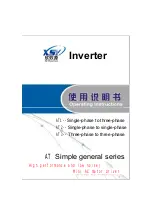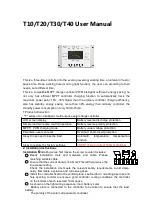
WAVECOM Decoder W74PC, W-PCI/e, W-CODE, W-CLOUD Manual V9.1.0
Transmission Modes
251
FEC and interleaving is used to combat the effects of fading, Doppler spread, multipath and burst noise.
User data is first FEC encoded, interleaved, then mapped into BPSK symbols and transmitted in 32 symbol
data segments. The 16 symbol channel probe segment transmitted between each succeeding data seg-
ment has a known PSK pattern. Its purpose is to keep the demodulator, mainly the equalizer, on track in
spite of adverse propagation conditions during the HF transmission.
This STANAG mode is either used to transmit data in transparent binary mode or as ASCII text. For this
reason the decoder displays the user data in
HEX
,
ASCII ASYNC
,
ASCII ASYNC (7 Data bits and No
Stop bit)
or
ASCII SYNC
format selected from
Options | Message Type...
. The decoder stops display-
ing traffic after the EOM bit pattern is received.
In the HEX display mode, the decoded binary data is displayed as hex values, MSB first.
In ASCII ASYNC mode, the bit stream is correlated with an ASCII ASYNC structure, i.e., one start-bit (0),
8 data bits and at least one stop bit (1). The 8 data bits are displayed LSB first. In addition to the EOM
pattern, the display will stop if more than 300 NULL characters are received or if the asynchronous data
structure is violated more than 80 times.
In ASCII ASYNC (7 data bits and no stop bit) mode, the bit stream is correlated with another ASYNC struc-
ture, i.e., one start bit (0) and 7 data bits. The 7 data bits are displayed LSB first. In addition to the EOM
pattern, the display will stop if more than 300 NULL characters are received.
In ASCII SYNC mode, each 8 bits (LSB first) represent one ASCII character. The display will stop when ei-
ther the EOM pattern was recognized or more than 20 NULL characters have been received.
Tuning the decoder
The decoder can process signals in both SSB settings: USB and LSB. The sideband is selected by toggling
the
Polarity
field of the display:
NOR
will select USB and
INV
will select LSB.
The center frequency of the decoder is set to the default value of 1800 Hz, but can be adjusted within a
range from 800Hz to 2400Hz. Small frequency deviations are automatically tracked and compensated dur-
ing the decoding. By using the bar graph, any remaining frequency difference can be compensated by fi-
ne-tuning of the receiver frequency or by adjusting the center frequency of the decoder.
In the
Confidence
field, the quality of decoding can be observed. A well recognized stream is determined
by a confidence value being stable and greater than 95 (i.e., 95% of the message is correct).
STANAG-4529
STANAG-4529 is specified by the NATO (North Atlantic Treaty Organization) Military Agency for Standardi-
zation in "Characteristics of Single Tone Modulators / Demodulators for Maritime HF Radio Links with
1240Hz Bandwidth" (14. December 1995).
Parameter
Value
Frequency range
HF
Operation modes
PSK, Broadcast/Simplex FEC
Modulation
8-PSK
Symbol rate
1200.0 Bd
Center frequency
1700 Hz
Receiver settings
DATA, CW, LSB or USB
Input format(s)
AF, IF
Additional Info
16 Bit redundancy
The modulation technique used in this mode consists of phase shift keying (8-PSK) of a single tone sub-
carrier that is selectable in 100Hz steps from 800Hz to 2400 Hz, with a default value of 1700 Hz.
The modulation speed (symbol rate) is always 1200 Bd. Through the use of different M-PSK modulation
formats and FEC (Forward Error Correction) coding rates, serial binary user information (raw data) ac-
cepted at the line side input can be transmitted at different user data rates.
STANAG 4529 single tone waveform has the following format characteristics which may be selected from
Options | Frame Format...
















































